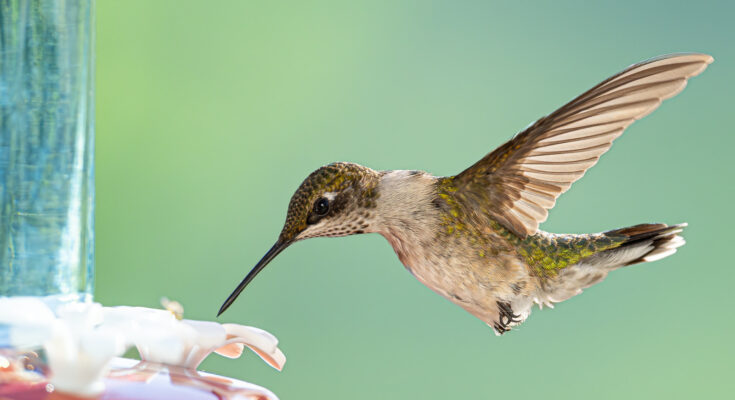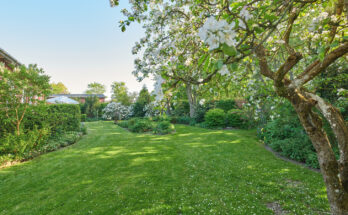Keep One Color Away From Your Hummingbird Feeder & Say Goodbye To Bees And Wasps
When it comes to tips and tricks for encouraging hummingbirds to your home, there’s probably a few methods you have tried. Whether it’s hanging the feeder at the perfect height or putting it in the correct place, attracting these tiny pollinators can take a surprising amount of effort. But while you’re pouring energy into making the perfect hummingbird feeder, nectar-hungry bees and wasps can take advantage of your hard work. Thankfully, there is a pretty easy method for keeping insects out of your hummingbird feeder, and it’s all about color! Avoiding yellow on your hummingbird feeder can be an enormous deterrent for bees and wasps.
Bees and wasps are generally helpful to your garden as pollinators themselves, but they swarm hummingbird feeders because the homemade hummingbird nectar inside resembles what they would find naturally in flowers. More than being a nuisance, bees and wasps can also drive away hummingbirds from feeders by aggressively crowding them. And while not all bees have stingers, you could be at risk of a wasp sting setting up a hummingbird feeder, as they are defensive over their food supplies. Doing something as simple as swapping out the color of your feeder is a safe way to ensure you keep hummingbirds around and happy without hurting garden helpers in the process.
Other methods to keep insects away from your hummingbird feeders
Insects see on an ultraviolet range, meaning they can identify blue, green, and purple. This also means they can see yellow and orange in limited capacities, but they cannot see red. As such, putting up a hummingbird feeder with even small amounts of yellow will likely attract bees or wasps more than one that’s all red. An easy solution is to paint over any yellow pieces of your feeder with red, non-toxic paint.
If the color of the hummingbird feeder isn’t a deterrent to flying insects, you can also try using nectar guards, which are perfect for hummingbirds’ long beaks but inaccessible for honeybees. Wasps are very territorial, so hanging a fake wasp nest near your hummingbird feeder might deter real ones from barging in. You could also try taking down your hummingbird feeders for a day, encouraging hungry bees to find a new food source.
It’s important to note you should never use any kind of insecticide on your feeder, because the same chemicals that would keep away insects could hurt hummingbirds. Similarly, it’s better to avoid applying Vaseline around hummingbird feeders, as the sticky substance could be difficult for them to preen out. You could also try distracting bees with a much tastier pollinator garden, complete with their favorite plants such as zinnias, salvia, and sunflowers.



